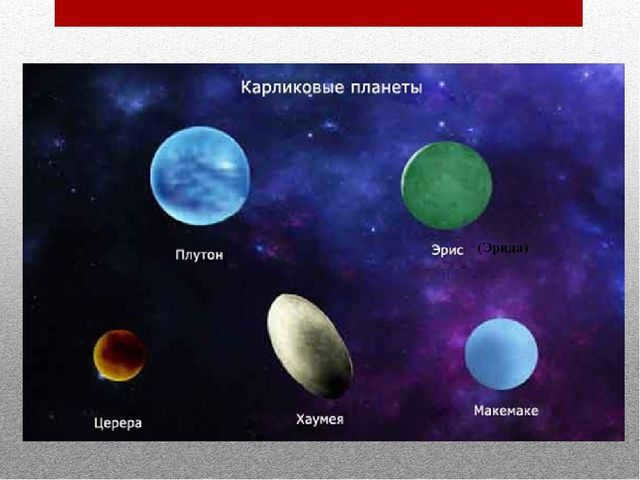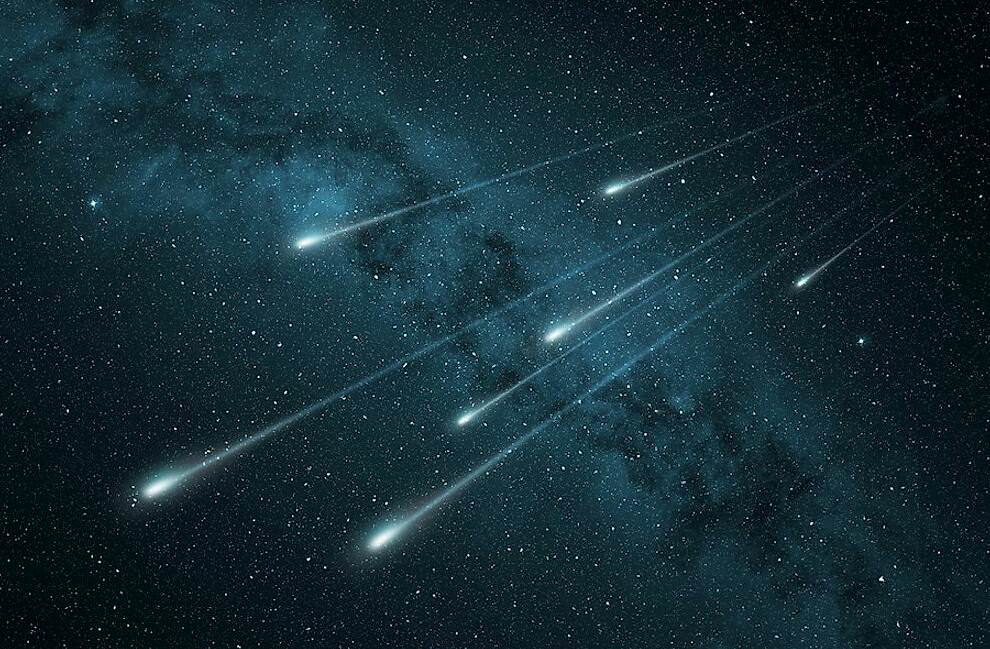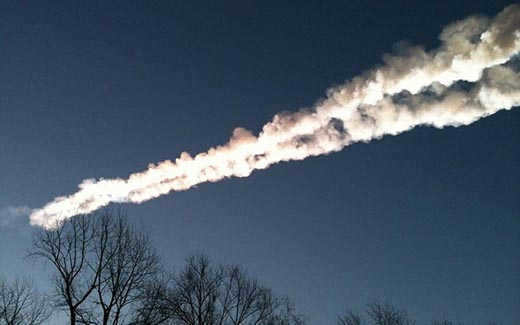
Bolides are celestial objects that enter our planet’s atmosphere periodically. They are characterized by their size and brightness. Essentially, bolides are meteoroids or meteors that have a brightness greater than that of Venus, specifically above -4m.
About velocity and luminosity
Meteoroids that penetrate the Earth’s atmosphere can range in size from minuscule to several hundred meters in length. As a result of their interaction with gas molecules, these particles become heated, melted, vaporized, and produce an extremely visible (particularly during the night) streak across the sky.
This phenomenon is commonly referred to as a “shooting star” and is believed by many to grant wishes when spotted. A fireball is an exceptionally luminous meteor that occurs when a celestial body weighing anywhere from 100 grams to several metric tons enters the atmosphere.
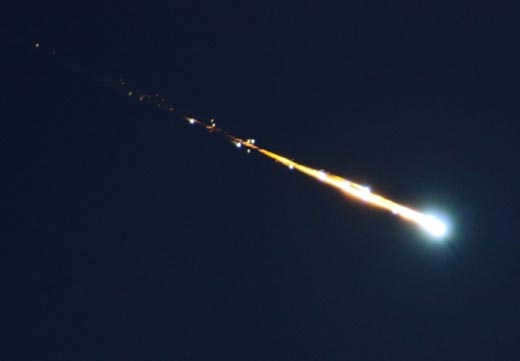
Bolides that are extremely bright can be seen during the daytime. When a bolide travels through the Earth’s atmosphere, it can produce flashes of light and even create powerful sounds. The outer layer and tail of a bolide consist of cosmic dust and ionized gases. Due to the prevailing winds in the stratosphere, the trail left by a bolide becomes curvy and dissipates within a few minutes.
A bolide has the potential to be brighter than the Moon and even outshine the Sun. These celestial objects can momentarily transform night into day, as their path across the sky emits a luminous glow.
Meteorites
Most frequently, bolides completely disintegrate as they pass through the different layers of the atmosphere. However, if the brightness of the celestial object is greater than -6m and its velocity is relatively low, the bolide will not completely disintegrate and fragments of it, known as meteorites, will reach the Earth’s surface.
In order for a bolide to not burn up entirely, its velocity must not exceed 22 kilometers per second, and there should not be a bright flash at the end of its trajectory, as this indicates the destruction of the bolide. It is the slow-moving bolides that leave behind unburned fragments that ultimately make it to the surface of our planet.
What is the method of observing bolides?
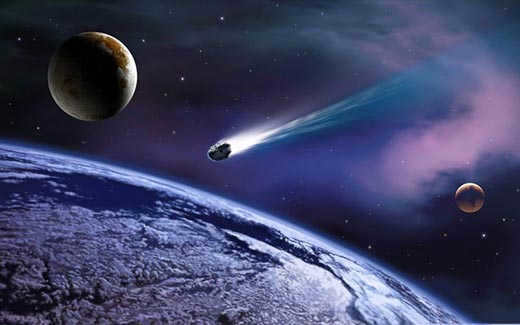

Every single day, a multitude of bolides zoom through the Earth’s atmosphere. However, not everyone on the planet takes notice of this celestial activity. Individuals with a keen interest in astronomy are aware that the trajectory of a bolide that streaked across the night sky can be plotted on a stellar map.
Scientists meticulously track the course of such cosmic objects, meticulously recording the azimuths and altitudes of the points at which the bolide manifested and vanished. If the body emerged from beyond the horizon and disappeared behind the horizon in a different location, it becomes imperative to ascertain the azimuths of these points. The observations carried out by astronomers hold immense significance since they enable the determination of the meteorite’s impact site and facilitate further investigations into the fragments of the bolide.
Experts additionally provide a calculation of the size of the bolide (comparing it to the diameter of the sun or moon), the luminosity (the apparent brightness of the celestial entity), and provide a description of its form. Bolides can have a symmetrical spherical form, or they can be oval or teardrop-shaped. The appearance of the trail also varies, depending on the size and velocity of the bolide, as well as the time of observation: during daylight hours, the trail appears smoky, while at night it is luminous and gleaming.
The most well-known celestial bodies in the history of our planet
– Halley’s comet, observed by the scientist Halley, was described by him as shining as bright as the Sun and having a diameter of 2.5 versts by 476 versts. These observations were conducted in March 1718.
– The Tunguska meteorite, which entered the Earth’s atmosphere in June 1908, caused immense destruction in the area surrounding the Podkamennaya Tunguska River. The mystery of this meteorite and the aftermath of its impact are still being investigated by scientists.
– The Katava meteorite in the Chelyabinsk region made its way to Earth in April 1941. Following its descent, fragments of this extraterrestrial “visitor” that had not burned up were discovered.
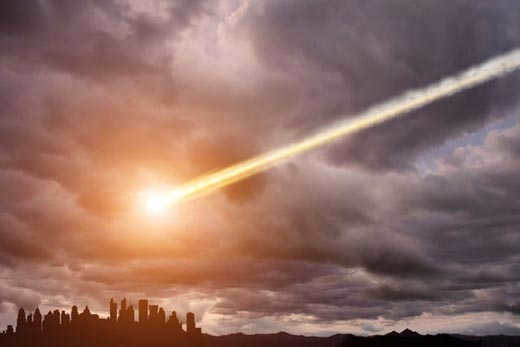
– A meteorite fell from a passing Vitim bolide in the Irkutsk region in September 2002, resulting in the destruction of a 10 by 6 kilometer forest area.
– In November 2013, a bright bolide exploded over Crimea. It is believed that this object was associated with the Leonids meteor stream.
– In February 2015, a bolide with an initial mass of 10 thousand tons and a diameter of 17 meters entered the Earth’s atmosphere above the Chelyabinsk region. It was traveling at a speed of 18 kilometers per second. Half a minute later, the celestial body disintegrated.
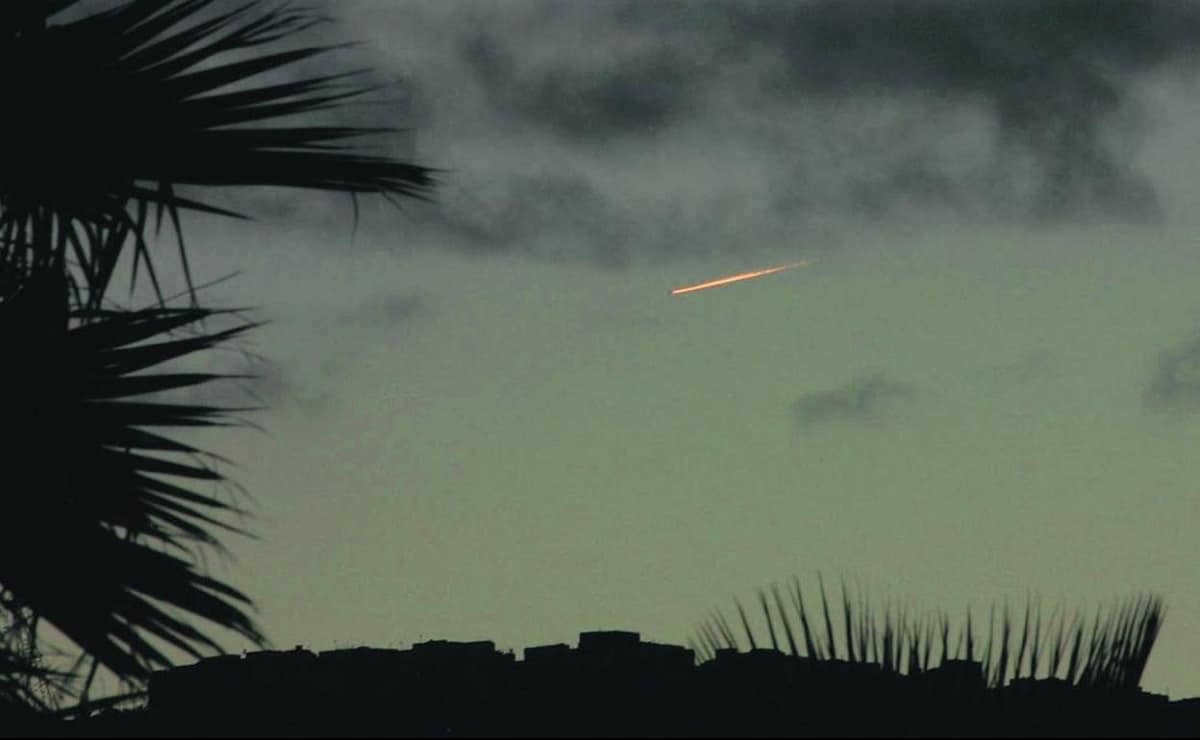
A fireball in the field of astronomy is a celestial occurrence that captures our interest and prompts us to gaze at the heavens. When discussing fireballs, we are specifically referring to those brilliant bursts that transitorily manifest during the nighttime, leaving behind a luminous streak. However, what exactly is an automobile?
Within this article, we shall enlighten you on the definition of an automobile, its distinguishing features, various classifications, and noteworthy historical occurrences.
What does the term “bolide” mean in the field of astronomy?
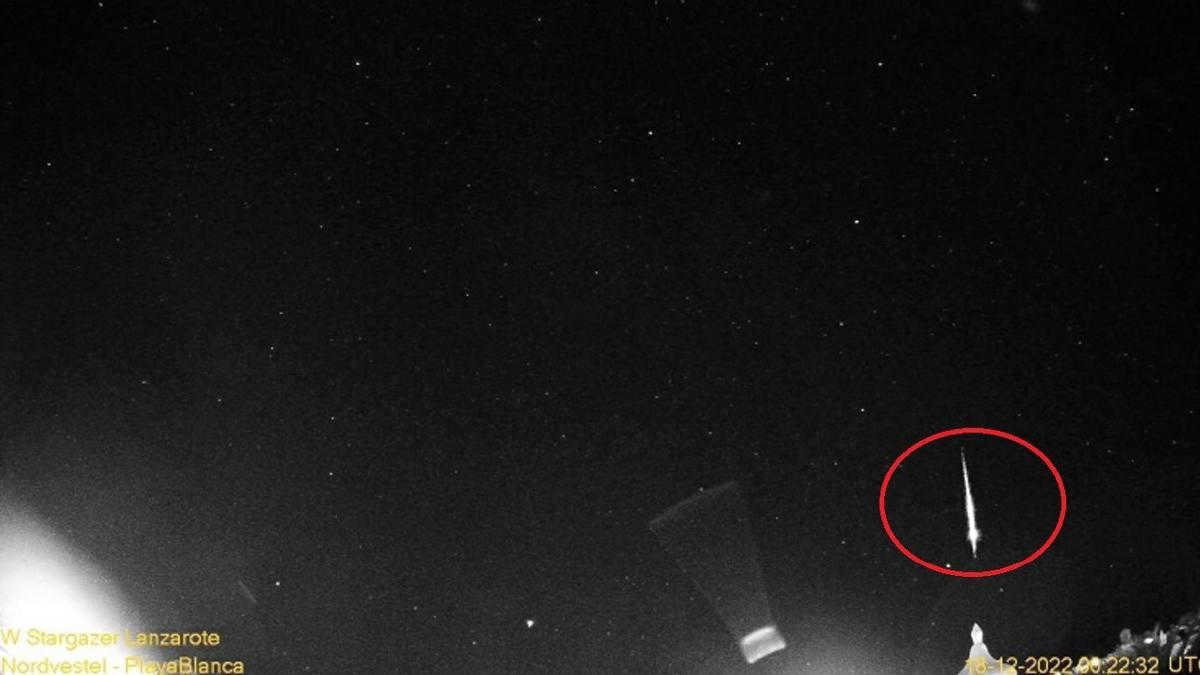
We can describe it as an enhanced shooting star. Unlike regular shooting stars, which are minuscule dust particles that disintegrate upon entering the Earth’s atmosphere, fireballs are much more spectacular. They consist of large fragments of cosmic matter, such as asteroids or comets, hurtling into our atmosphere at incredible speeds.
As a fireball streaks across the sky, the friction with the air causes the object to rapidly heat up. This results in an intense luminous reaction that can rival the brightness of a full moon and even illuminate the entire nighttime landscape. It is truly an awe-inspiring sight.
The allure of racing cars lies in their fleeting nature. Unlike stationary stars, shooting stars swiftly traverse the heavens, vanishing within moments or minutes.
Racing carsare typically spotted during meteor showers. Meteor showers are celestial occurrences in which the Earth traverses a region of space with an exceptionally dense cluster of cosmic debris. These fragments enter our atmosphere in abundance, resulting in an even more awe-inspiring spectacle of shooting stars streaking across the firmament.
Main Characteristics
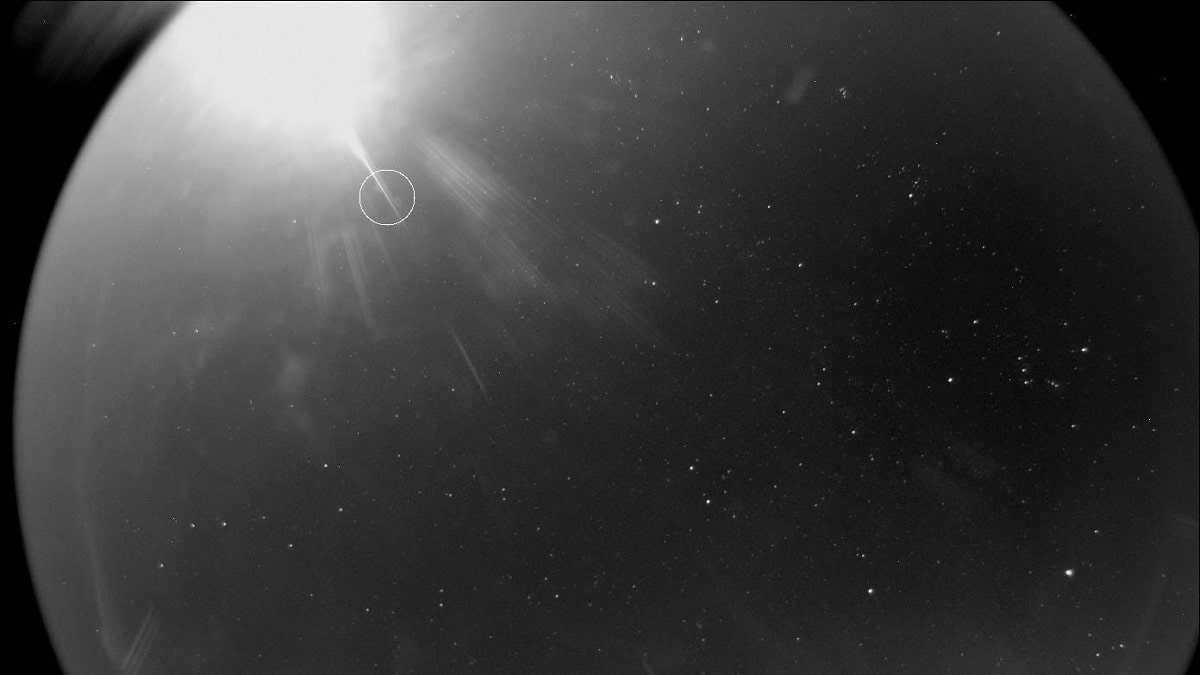
These celestial bodies travel towards Earth at incredible speeds, often surpassing 60 kilometers per second. They can also display vibrant and diverse hues. As they incinerate in the atmosphere, they can release shades that range from brilliant white to yellow, orange, green, and even deep blue. The array of colors is truly remarkable and adds a touch of enchantment to the phenomenon.
Another notable characteristic is the trail they leave behind. As a celestial body passes through Earth’s atmosphere, it can create a luminous trail that lingers for several seconds or even minutes after the meteor disappears. This trail can take on various shapes and stretch a significant distance across the night sky, forming a memorable and unforgettable image.
It should be emphasized that bolides do not present a direct danger to us. While they may appear striking and occasionally fracture into smaller pieces, the majority disintegrate in the atmosphere prior to reaching the Earth’s surface. On rare occasions, however, if they are sufficiently large, certain fragments have the ability to withstand extreme heat and make contact with the surface, transforming into meteorites.
Instances in history involving the bolide
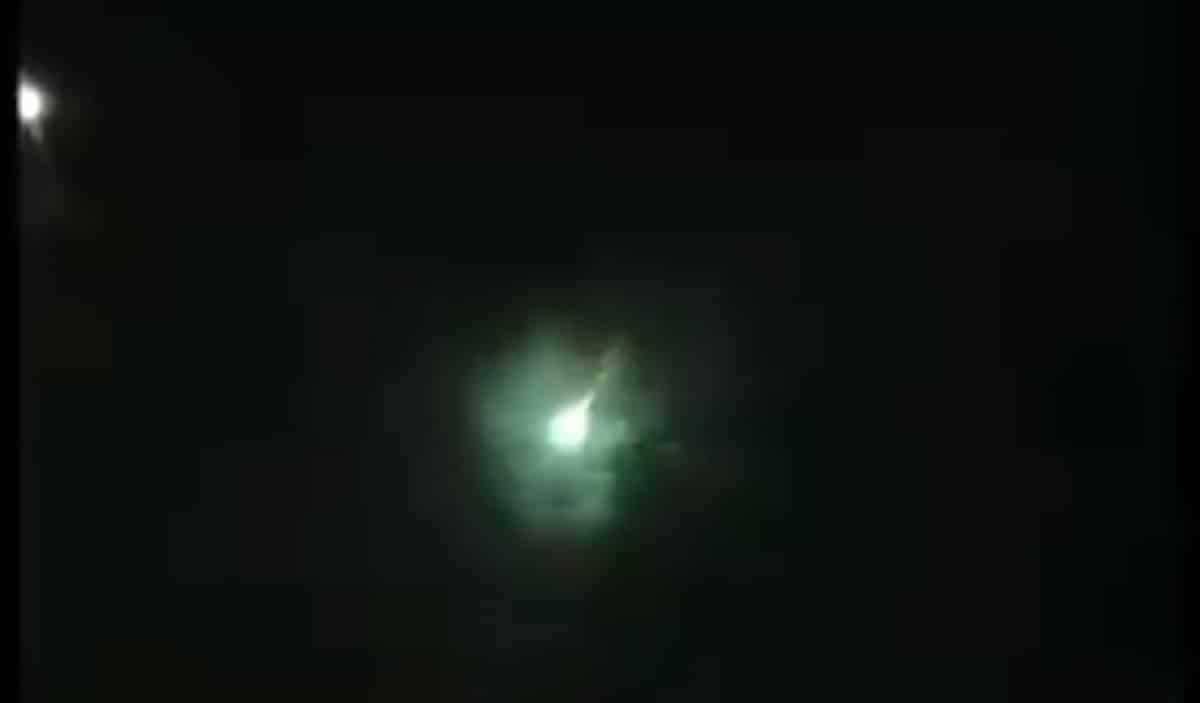
In 2013, the Chelyabinsk meteorite fell at the same time as the asteroid 2012 DA14 (now 367943 Duende) passed by. The fact that these two events happened independently suggests that such occurrences may be more frequent than previously believed, leading to a reevaluation of the rate at which superbolids enter Earth’s atmosphere.
Accounting for the detection of superbolids poses several challenges from a statistical standpoint. For instance, there are numerous objects in the sky that can be mistaken for fireballs, and only those that are in close proximity to a crowd or are exceptionally bright can be identified.
Before the era of aviation, most people, except those living in isolated rural areas, did not have any difficulty in confusing these phenomena with non-fireball phenomena. Since the media has been extensively reporting on sightings of bolides and meteors for many years all around the world, this provides an excellent opportunity for conducting statistical research on historical superbolide observations.
A database of meteorite sightings from 1750 to the present has been compiled to enhance the existing knowledge of fireballs. Expanding on the strengths of this field of study, over 1,000 historical news articles were examined to identify reports pertaining to significant meteorites and bolides. This approach enables specific aspects to be explored in greater depth, including the event’s geographic location, classification based on its characteristics, the presence of a sonic boom, any recovered remnants, and other notable features such as color, trajectory, and duration of the observations.
Tracking and vehicle categories
One of the most prevalent methods for tracking automobiles involves networks of video and still cameras positioned at various locations. These cameras are specifically designed to capture high-quality images of the nighttime sky and automatically record any occurrences of light phenomena, such as the appearance of a fireball. By merging and examining images from multiple cameras, researchers are able to determine the precise trajectory, speed, and altitude of the bolide in the atmosphere.
In addition to the tracking cameras, infrasound and radio wave sensors are also utilized for monitoring vehicles. These sensors are capable of detecting sound and electromagnetic waves emitted by fireballs as they traverse the atmosphere. This data provides supplementary information regarding the energy released, mass, and altitude of the object in question.
When it comes to the varieties of bolides, we can identify two primary classifications: meteoric bolides and space bolides. Fireballs are pieces of cosmic matter, typically debris from asteroids or comets, that enter Earth’s atmosphere and disintegrate due to friction. These fiery phenomena are exceedingly common and are responsible for well-known meteor showers like the Perseids or Leonids.
On the flip side, cosmic fireballs are objects that originate from outside our solar system. They may be fragments from interstellar space captured by the gravitational pull of the Sun, or even remnants of more distant entities like escaping stars or dust clouds. Cosmic fireballs are far less frequently observed, and studying them offers a broader perspective on the vast cosmic diversity that surrounds us.
I trust that this data will expand your knowledge of the astronomical phenomenon known as a bolide and its distinctive features.
The substance of this piece aligns with our ethical guidelines for editorial content. To notify us of any inaccuracies, please click here.
Comprehensive Article Summary: Network Meteorology " astronomy " Fireball in astronomy

Are you familiar with bolides? They are actually present among numerous celestial entities. However, what exactly are these entities with such an unusual name?
Interestingly, there are individuals who mistakenly equate meteorites with other space objects. Surprisingly, there are quite a multitude of these objects. Let’s attempt to comprehend this vast array of celestial bodies.
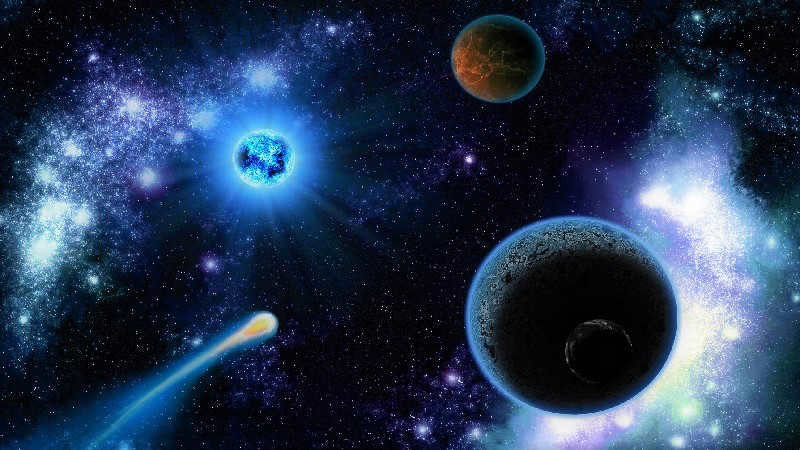
What are the distinctions between a meteor, meteorite, and asteroid?
To begin with, it is important to comprehend the concept of a meteor. Essentially, it is a luminous phenomenon that occurs when small particles from outer space collide with the Earth’s atmosphere and burn up. In essence, a meteor can refer to any extraterrestrial object that has collided with and disintegrated in the Earth’s gaseous envelope.
For instance, asteroids and other small celestial bodies that disintegrate upon impact are referred to as meteors. If any remnants of such a fallen asteroid remain, they would then be classified as meteorites. Specifically, a meteorite is a solid cosmic object that has made its way to the Earth’s surface.
However, it should be noted that meteorites are often observed as bolides before they reach the surface. This could potentially explain the confusion between meteors and meteorites. Nevertheless, the relationship between the two is quite straightforward:
- A body in motion travels through space;
- When it enters the layers of the atmosphere, it transforms into a meteor;
- Only upon impact with the surface does it become a meteorite.
Therefore, distinguishing and identifying a meteorite from other celestial objects is quite simple – it must make contact with the surface. However, it can sometimes be mistaken for terrestrial rocks.
Having knowledge of the English language is always beneficial, whether in the field of space exploration or in our everyday lives. An English language school can assist you in learning this valuable skill, offering cutting-edge techniques, powerful programs, and courses suitable for individuals of all backgrounds.
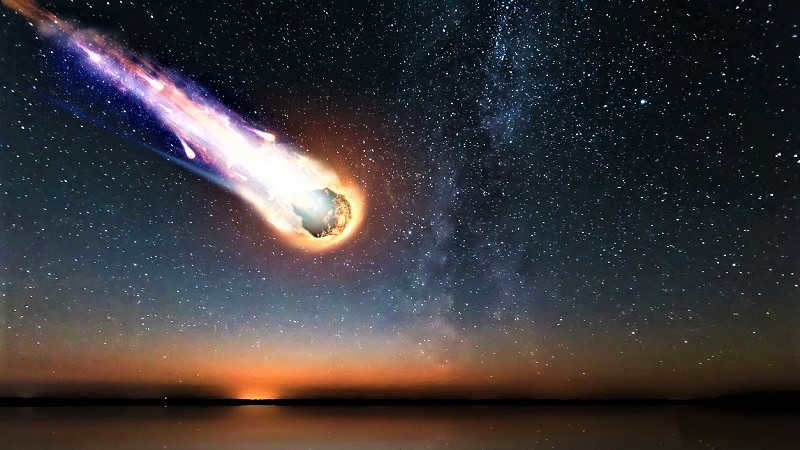
What do we mean by bolides?
Undoubtedly, meteors exhibit a wide range of characteristics. They vary in terms of their size, luminosity, velocity, and trajectory.
Among these, we identify a specific type known as bolides. It refers to meteors that possess a luminosity greater than -4m and a clearly visible diameter.
The International Astronomical Union has not officially defined these objects. Therefore, they do not technically exist, but in reality, they do.
We can describe bolides as luminous phenomena of a particular brightness and size, which occur when celestial bodies collide with the Earth’s atmosphere and subsequently burn up.
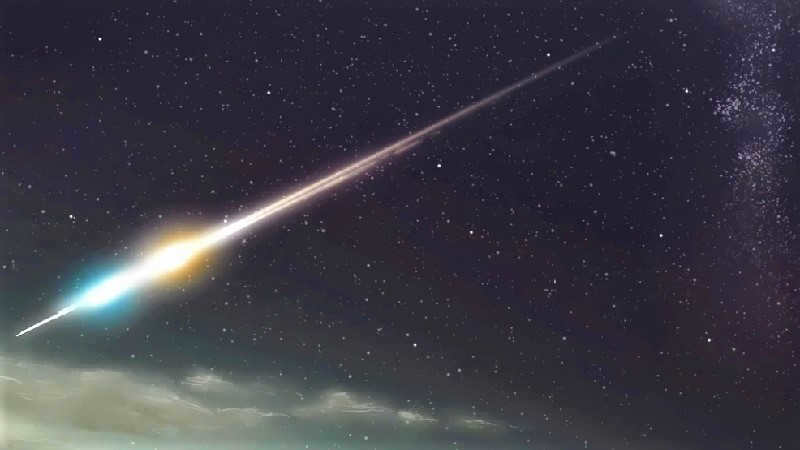
Interesting details about bolides
It is important to note that when bolides move through a planet’s gas envelope, they can create a vibrant trail of gas and dust.
On some occasions, bolides can be heard as they fly by, producing crackling sounds in the air. Additionally, their presence can cause disruptions in radio communications.
These effects are believed to be caused by the electromagnetic field that accompanies the bolides’ flight. In simpler terms, the vibrations generate sound and wave interference in the surrounding environment.
Significantly, bolides can be seen in the sky even during daylight hours due to their high brightness.

As a matter of fact, the most brilliant meteors are referred to as supermeteors.
Currently, bolides and meteorites are capturing significant attention. Additionally, there exists a distinct field of study known as meteoritics or meteor astronomy. This branch focuses on the examination of meteorites and cosmic dust, as well as their interactions with the Earth’s atmosphere.
Bolids are observed from satellites. It should be noted that specialized bolide networks have been established to gather data on the entry of meteoric material into the Earth’s atmosphere. However, these networks are only accessible in Europe and do not provide a productive means of observation.
- A bolide, which comes from the Greek word βολίδος meaning “a throwing spear,” refers to a meteor that has a brightness greater than -4m (brighter than the planet Venus) or has a noticeable angular size. The International Astronomical Union does not have an official definition for a bolide.
Sometimes, particularly bright bolides are referred to as superbolides.
Bolides often leave behind a bright trail (tail) of dust and ionized gases. Before falling to Earth, meteorites are observed as bolides. During their flight, they may produce sound and/or disrupt radio communications (also known as electrophonic bolide).
Similar phrases
A meteor that has traversed Earth’s atmosphere and continues its journey through space is known as a touched (passed) meteor. In some cases, fragments of the meteoroid may fall to the surface of our planet as meteorites if the object begins to disintegrate or explodes in the dense atmosphere. The mass and velocity of the meteoroid are typically diminished due to the friction caused by Earth’s atmosphere, leading to a change in its orbit as it departs. Notable examples of touched meteors include the Great Bolide of 1860 and the Great Daylight Bolide of 1972.
Meteor (from the Greek word μετέωρος, “meteoros”), meaning “floating in the air,” is a phenomenon that occurs when small meteoric bodies (such as fragments of comets or asteroids) combust in the Earth’s atmosphere. A more intense version of this phenomenon, brighter than stellar magnitude -4, is known as a bolide. There are two types of meteor phenomena: oncoming and catch-up. These interdisciplinary phenomena are extensively studied by meteoritics, a branch of astronomy, as well as atmospheric physics.
The solid part of a comet, which is relatively small in size, is called the nucleus. As a comet approaches the Sun, a coma forms around its nucleus.
Leonids is a well-known meteor shower with its radiant located in the constellation Leo (R. A. = 153°, Decl. = +22°). It is active from November 14 to 21 and is known for its strong meteor showers.
Citations in the literature
Researchers Zuluaga and Ferrin utilized video camera footage captured at Revolution Square in Chelyabinsk to simulate the path of the bolide both before and after its descent into the Earth’s atmosphere. By analyzing the shadows cast by the poles during the bolide’s flash, they were able to accurately determine the trajectory’s altitude and azimuth. Consequently, they concluded that the bolide first ignited at an elevation ranging from 32 to 47 kilometers. Additionally, they identified the origin of the bolide in the constellation of Pegasus. According to the Colombian scientists, the meteorite’s velocity ranged from 13 to 19 km/s.
The Tunguska phenomenon is the most likely documented case of the Earth colliding with a comet nucleus in the last century. On June 30, 1908, a remarkable event occurred when a massive meteor entered the Earth’s atmosphere and detonated at an altitude of approximately 10 km, causing extensive damage in the Siberian taiga. The cometary nature of this object is supported by numerous observed features of this celestial occurrence [Gladysheva, 2008; Nikolsky et al., 2008]. Another significant event in the Solar System was the aforementioned collision of fragments from the Shoemaker-Levy 9 comet with Jupiter in 1994. In July 1992, this comet came within a distance of less than 100 thousand km from Jupiter and broke apart into twenty-four pieces (see Fig. 4.4 on the inset).
Many of these small cosmic disasters go unnoticed by humans. Among the ones that do get attention, the most frequent is the meteor. A captivating and brilliant streak in the night sky, created by a space visitor’s demise in the Earth’s atmosphere. In more severe instances, when the “visitor” is of considerable size, the streak is not limited to just the material – sometimes, even on a sunny day, one can witness an extraordinary spectacle: a dazzling fireball.
For centuries, people have been witnessing extraordinary flying objects. Numerous early historical sources contain accounts of remarkable celestial phenomena. For example, in 215 BC, something resembling ships was spotted in the sky above Rome. While there is ample evidence, most of it pertains to comets, meteors, bolides, and other celestial bodies. Only a small fraction of the recorded facts in the chronicles remain truly unexplainable. However, it is important to recognize that many of these accounts were interpreted through the lens of ancient or medieval worldviews, making it impossible to ascertain their veracity. The so-called “celestial ships” mentioned in historical chronicles are likely part of ancient legends surrounding unusual sky sightings, possibly including oddly shaped clouds.
The more the sports car accelerates, the farther the leaves will scatter and the less time the racing car will stay within the frame. What will be the ultimate outcome?
Working at “Austro-Daimler” and later at “Daimler-Benz” allowed Porsche to establish the fundamental principles of designing racing cars, which have remained unchanged to this day. In today’s Formula 1 cars, competing in global races, one can easily identify all the fundamental innovations pioneered by Porsche nearly 100 years ago.
Therefore, it is entirely possible that on the cunning speedster that rained down a shower of fire on Chelyabinsk, a new and unknown form of life in the shape of bacteria or viruses may have once again come flying towards us, seeking a favorable environment among us….
Similar incidents are also frequently observed in the present era. In 2002, the Israeli “Boeing-757” pilots experienced a terrifying situation while flying over Ukraine – they were unexpectedly targeted by anti-aircraft gunners! However, it was later discovered that the cause of this incident was actually a bolide, which was a celestial object flying through space.
Continuation of related ideas
Meteor shower (also known as iron rain, stone rain, or rain of fire) refers to the occurrence of multiple meteorite falls resulting from the fragmentation of a large meteorite during its descent towards the Earth.
Extraordinary comets, also known as great comets, are comets that become exceptionally luminous and conspicuous to observers on Earth. On average, a great comet becomes visible approximately once every ten years.
The coma, derived from the Latin word coma and the Greek words χομη/κομη meaning “hair,” is a hazy cloud of dust and gas that surrounds the nucleus of a comet. Together, the coma and nucleus comprise the comet’s head. As the comet approaches the Sun, the size of the head increases, and sometimes a tail becomes visible.
A celestial body known as a comet is referred to as “hairy” or “braided” in Greek, hence its name “comet”. This name is derived from the physical appearance of the comet, which includes a distinct “head” and a long “tail” resembling hair. In the past, comets were associated with fear and terror as they were believed to be harbingers of plagues, wars, and death.
A meteor shower, also known as a starfall or star shower, occurs when a swarm of meteor bodies enters the Earth’s atmosphere, resulting in a display of meteors.
Mercury’s transit across the Sun’s disk is an astronomical event in which Mercury aligns precisely between the Sun and the observer’s point of view (such as the Earth or a spacecraft). This alignment causes Mercury to appear as a small black dot moving across the surface of the Sun.
The tail of a comet is a long plume of dust and gas made up of cometary material, which forms when the comet gets closer to the Sun and becomes visible due to sunlight scattering off of it. Typically, the tail points away from the Sun.
Zodiacal light is a faint glow that can be seen shortly after sunset or just before sunrise, right after or right before astronomical twilight. It gets its name because it is consistently visible in the zodiacal constellations.
The Kreutz comets are a group of comets that orbit close to the Sun and are named after astronomer Heinrich Kreutz, who first discovered their connection. It is believed that they are fragments of a larger comet that broke apart several centuries ago.
The hypothesis of Moon formation, known as the “Megaimpact Model” or “Giant impact,” posits that the Moon was created through a collision between a young Earth and a Mars-sized object. This theoretical object is sometimes referred to as Teia, named after the Titanid sister who was the mother of Helios, Eos, and Selene (the moon).
Sungrazing comets, also known as near-solar comets or sungrazers, are comets that come extremely close to the Sun at perihelion, sometimes only a few thousand kilometers away from its surface. When these small comets have a close encounter with the Sun, they can completely vaporize, while larger comets may survive multiple passes near the Sun. However, the intense vaporization and tidal forces often cause these comets to disintegrate.
An astronomical event known as a parade of planets occurs when several planets in the solar system align on the same side of the Sun within a small section of the celestial sphere. During a parade of planets, these celestial bodies are relatively close to each other in the sky.
Ash Moonlight is a unique occurrence where the Moon appears fully visible despite only a portion of it being illuminated by the Sun. In such cases, the unilluminated portion of the Moon’s surface takes on a distinct ash hue.
A super moon is an extraordinary astronomical event that happens when a full or new moon coincides with perigee, the point of closest approach between the Moon and the Earth. This phenomenon is a result of the Moon’s elliptical orbit around our planet. As a result, observers on Earth are able to witness a larger-than-usual size of the lunar disk.
Comet dust is cosmic particles that originate from comets. The examination of comet dust can provide valuable information about the formation time of comets, which, in turn, is believed to indicate the time of formation of the entire solar system. Specifically, long-period comets spend most of their time far away from the Sun, where the temperature is too low for vaporization to occur. It is only when a comet gets closer to the Sun and experiences warmth that it releases gas and dust, making them visible and available for observation and research.
The Roche limit is the radius of the circular orbit that a satellite orbits around a celestial body. At this point, the tidal forces caused by the central body’s gravity are equal to the satellite’s self-gravitational forces.
A lost comet, also known as a lost comet, refers to a comet that was previously detected but then lost track of after its last orbit passage. This is often due to insufficient data to accurately determine the comet’s orbit and predict its position. The designation “D/” is used for periodic comets that are no longer observable or considered extinct.
A radiant, derived from the Latin word “radians” meaning radiating, is an area in the celestial sphere that appears to be the source of meteors. These meteors are observed when the Earth crosses paths with a group of meteoric bodies that orbit the Sun together.
The rings of a planet are a formation of dust and ice that rotate around the planet in a flat and concentric system in the equatorial plane. Rings can be found in various gas giants within our Solar System, including Saturn, Jupiter, Uranus, Neptune, the asteroids Chariklo and Chiron, the dwarf planet Haumea, and potentially Saturn’s moon Rhea.
Opposition refers to the position of a celestial body in the solar system where the difference in ecliptic longitudes between the body and the Sun is 180 degrees. In other words, the body is aligned with the “Sun – Earth” line and can be observed from Earth in the opposite direction to the Sun. Opposition can only occur for planets and other celestial bodies that are further away from the Sun than the Earth.
Meteorite (Greek. Μετεώρος – “elevated into the atmosphere”) – a celestial body that has fallen onto the surface of a large celestial object.
The Yarkovsky effect refers to the occurrence of a weak propulsion impulse caused by thermal radiation emitted from the surface of an asteroid, which gets heated during the day and cools down at night, thereby granting it additional acceleration. This phenomenon accounts for the reason why the number of asteroids reaching Earth is higher than previous estimations.
A lunar meteorite is a meteorite that originally originated from the Moon. Lunar meteorites are typically classified as the outcome of transient lunar events. There have been hypotheses about the possibility of associating tektites with lunar meteorites, but this viewpoint is not universally accepted within the scientific community.
A planetesimal, derived from the English words “planet” and “infinitesimal,” refers to a celestial body that orbits a protostar. It forms through the gradual accumulation of smaller bodies made up of dust particles from the protoplanetary disk. By continuously attracting new material and increasing in mass, planetesimals grow into larger bodies. The individual fragments that make up a planetesimal begin to compact as they attract one another. One example of a planetesimal is the asteroid Lutetia, which has a dense interior.
Ice satellites belong to a category of natural satellites with surfaces primarily composed of water ice. These icy satellites may have an ocean beneath their surface, as well as a silicate or metallic core. It is believed that they may be made up of ice-2 or other polymorphic forms of water ice.
A protoplanet is a large planetary embryo found in a protoplanetary disk that experienced internal melting, leading to the differentiation of its interior. These celestial bodies are thought to have originated from planetesimals, which are kilometer-sized objects that were attracted to each other gravitationally and collided. In accordance with the theory of planet formation, the protoplanets perturbed each other’s orbits and eventually collided, gradually forming larger planets.
The presence of water beyond Earth, or even just traces of its existence in the past, is a subject of great scientific interest as it suggests the possibility of extraterrestrial life.
Io, a moon of Jupiter, is known for its significant volcanic activity. Approximately 2% of the moon’s surface is covered by active hot spots, making it the most volcanically active body in our solar system. This is evident in the presence of numerous lava flows and over a hundred calderas, although there are no impact craters on its surface.
A coronal mass ejection refers to the ejection of matter from the solar corona. These events are challenging to observe from Earth’s surface. The first documented observation of coronal emissions in the visible wavelength range occurred in the early 1970s using the coronagraph on the Seventh Orbiting Solar Observatory. Subsequent research on this phenomenon was conducted at the SMM station in 1980.
An extinct comet is a celestial body that has lost most of its volatile substances, causing it to no longer exhibit a tail or coma as it approaches the Sun. The nucleus of the comet has already evaporated all of its volatiles, leaving behind rocks that mainly consist of heavy non-volatile elements similar to those commonly found on asteroids. These extinct comets are relatively small and dark, making them extremely challenging to detect even with the most powerful telescopes.
Cosmic dust, also known as micrometeorites, refers to the dust particles present in space. They vary in size, ranging from a few molecules to 0.2 microns. Approximately 60 tons of space dust settle on planet Earth daily. Alternative estimates suggest that around 40 thousand tons of space material accumulate each year.
Soft recurring gamma-ray bursts originate from an astronomical entity that generates intense bursts of gamma rays and X-rays with irregular periodicity. These bursts are believed to stem from a specific category of celestial bodies known as magnetars or neutron stars with surrounding dust disks. In the English language, these entities are commonly referred to as SGR (Soft Gamma Repeaters), while in Russian articles, the abbreviation IGM is frequently used.
A solar flare is a violent event in the Sun’s atmosphere that releases a tremendous amount of energy in the form of kinetic, light, and thermal energy. These flares impact all layers of the solar atmosphere, including the photosphere, chromosphere, and corona. It is important to note that solar flares and coronal mass ejections are distinct and separate phenomena in solar activity. The energy released during a powerful solar flare can reach up to 6×10^25 joules, which is approximately one-sixth of the energy emitted by the Sun every second, or 160 billion joules.
An occultation is a fascinating astronomical event where one celestial body passes in front of another from the perspective of an observer at a specific location, causing a partial obstruction of the latter body.
A mascon, derived from the English term “mass concentration,” refers to a specific region within the lithosphere of a planet or natural satellite that generates positive gravitational anomalies. The most well-known examples of mascons are found on the moon, where they have been identified and localized through perturbations in the movements of artificial satellites orbiting the lunar surface. These mascons are typically found beneath the lunar seas, which exhibit a rounded shape.
Meanwhile, a terminator, originating from the Latin word “terminare” meaning “to stop,” represents the boundary between the illuminated (light) portion and the unilluminated (dark) portion of a celestial body, such as a space body. When observed on a spherical body, the terminator appears as a semi-ellipse, transforming into a straight line at the end of the first and beginning of the last quarters.
Perturbation (also known as perturbation of the orbit) refers to the deflection of a celestial body from its intended orbit due to external forces other than the gravitational pull of the center of mass. These external forces can include the influence of other celestial bodies or the resistance encountered in the surrounding medium. The study of perturbations can be traced back to ancient times when the first attempts were made to calculate the movements of celestial bodies. However, it wasn’t until the 17th century that the true nature of these perturbations started to become clearer. Isaac Newton, in his pursuit to understand the laws of motion and gravity, sought to analyze the perturbations of orbits. However, he faced significant challenges along the way.
Interplanetary space, on the other hand, refers to the vast expanse of space that lies between the orbit of the farthest planet from its star.
Conjunction, in the field of astronomy, refers to the arrangement of celestial bodies where their ecliptic longitudes are identical. In some cases, the notion of conjunction by direct ascent is also utilized instead of ecliptic longitude. Consequently, during the time of conjunction, two bodies are relatively near each other on the celestial sphere, although the exact moment of conjunction may not coincide with the moment of closest approach. The term conjunction can also be employed in astrology.
Quasisputnik, derived from the Latin term quas(i) meaning “like” or “something like,” is an object that exists in a 1:1 orbital resonance with a planet, enabling it to remain in close proximity to the planet for numerous orbital periods.
Eclipse refers to an astronomical event wherein one celestial body obstructs the light from another celestial body.
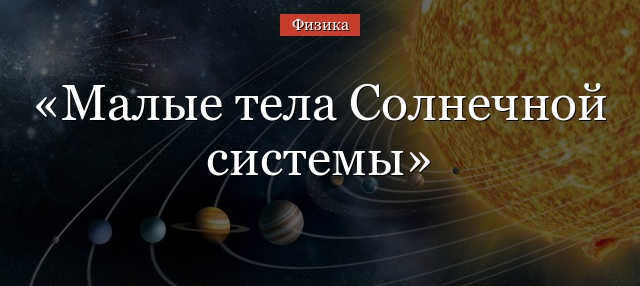
The Solar System is composed of the Sun, planets, and an assortment of smaller objects known as “Small Bodies”. Let’s examine the characteristics of these small bodies, starting with the tiniest ones.
Small bodies within the Solar System
In accordance with contemporary astronomical theories, the Sun, planets, and small bodies within the solar system originated from a shared protoplanetary cloud. The majority of the mass (over 99.99%) was concentrated within the Sun and planets, while the small bodies constituted less than 0.01% of the total mass.
Comets, Bolides, and Meteors
Comets, bolides, and meteors have been observed by humans since ancient times. The first recorded mention of a comet in Chinese chronicles dates back to 2296 B.C. Ancient philosophers also spoke about “stones from the sky”, which are also mentioned in Old Russian chronicles.
Meteors are small objects, typically weighing only fractions of a gram, that orbit the Sun. When they enter the Earth’s atmosphere at altitudes of about 100km, they heat up from the friction with the air and burn up.
Meteors are often fragments of larger celestial bodies and are frequently grouped together in meteor streams that reappear each year near the same point on the celestial sphere, known as the radiant.
If a fragment is large enough, it can reach the Earth’s surface before burning up, in which case it is called a bolide or meteorite.
A comet is a massive celestial object that follows a highly elongated orbit around the Sun. Typically, it possesses a relatively porous nucleus with an irregular shape, measuring in the range of tens of meters, composed of a combination of dust and ice. This composition gives rise to the formation of a coma and a tail as the comet approaches the Sun. The coma represents the “head” of the comet, consisting of gas particles that vaporize from the nucleus as it is heated. As the comet nears the Sun, the coma extends into a long plume, propelled by radiation, resulting in the formation of a distinct “tail” pointing away from the Sun.
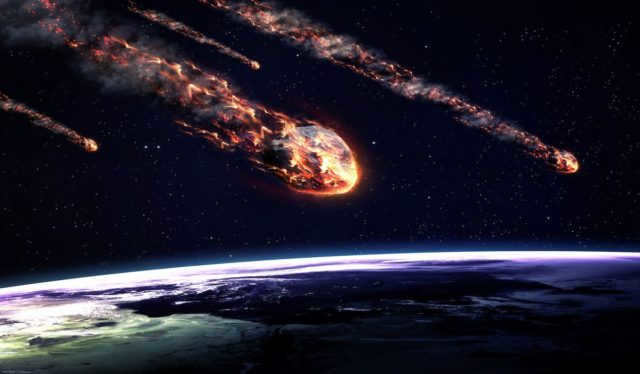
Asteroids
Asteroids are celestial bodies found in the solar system that are larger than comets but smaller than planets. They are composed mainly of silicate rocks and come in a variety of sizes, ranging from tens of meters to hundreds of kilometers. Unlike planets, asteroids do not have enough gravitational force to form a spherical shape, resulting in irregularly shaped clumps.
These objects orbit the Sun and are divided into two main regions. The first region, known as the Asteroid Belt, is located between the orbits of Mars and Jupiter, where the majority of asteroids were first discovered. The second region, called the Kuiper Belt, lies beyond the orbit of Neptune.
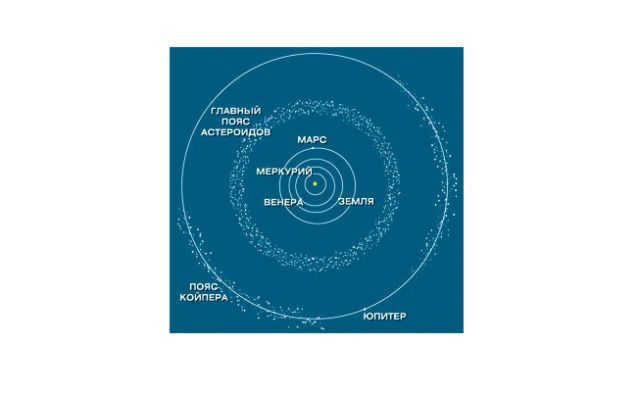
Dwarf planets
The category of dwarf planets refers to the most massive among the smaller celestial bodies found in the solar system. This term is relatively new and was established to differentiate these objects from traditional planets.
Initially, Pluto was considered a planet when it was first discovered in 1930. However, further research revealed that its mass was relatively small. In 1978, scientists discovered Charon, which was nearly the same size as Pluto. In the early 21st century, two more satellites named Nycta and Hydra were found, along with numerous small asteroids in the vicinity of Pluto’s orbit. As a result, in 2006, it was necessary to redefine the term “planet.” The new definition stated that a celestial body should:
- Orbit around a central star;
- Have enough mass to form a near-spherical shape;
- Be the dominant object in its orbit and clear its path of smaller celestial bodies.
For a celestial body to be classified as a planet, it must meet all three conditions. If it only satisfies the first two conditions, it is referred to as a dwarf planet. And if it only meets one condition, then it is classified as an asteroid.
Based on this criterion, Pluto was considered a dwarf planet and it was the first object to be discovered in the Kuiper Belt.
Applying the same principle, the status of the largest asteroid, Ceres, was changed as it has a spherical shape and therefore qualifies as a dwarf planet.
In addition to Pluto and Ceres, there have been discoveries of other dwarf planets in the Kuiper Belt, such as Haumea, Makemake, and Erida. Furthermore, there is another celestial body, Sedna, located beyond the Kuiper Belt, which is possibly a dwarf planet.
